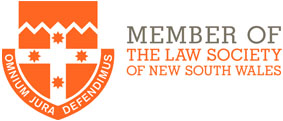When it comes to properly executing documents, depending on the type of document and the parties executing it, there are different requirements for it to be valid.
The manner of execution depends on matters such as:
- Party – whether a party is an individual, a partnership, the Government, an association or a corporation (and whether those signatories are parties in their own right or as a trustee of a trust or a superannuation fund;
- Document – whether it is a Deed or just a contract or an Agreement; and
- Physical/Electronic – whether it to be signed online or in person, or a combination of both.
PARTY TYPE
Individuals
An individual may execute a document by simply signing it with their signature witnessed by a person who is not party to it.
Partnerships
For a partnership to be bound by a document or a deed, either all partners to the partnership or an individual authorised by all the partners (whether or not the individual is a partner) should execute the document or deed.
Often, documents will be executed by a partner on behalf of a partnership. This authority may be set out in the partnership deed or a power of attorney. If you cannot obtain a copy of the relevant authority, you should consider obtaining a warranty from the individual in the relevant execution clause that they have authority of the partnership to so execute the document.
Companies
Section 127 of the Corporations Act (Corporations Act) sets out the ways in which a document may be executed by a company. If a company executes a document in this way, anyone will be able to rely on the protection in other sections of the Corporations Act for dealings in relation to that company. A company may execute documents under seal or choose not to have a company seal and even if the company has a seal, it need not apply it.
A company may execute a document with or without a seal if the document is signed by:
- 2 directors; or
- a director and a company secretary o; or
- a sole director (there is no requirement for a private company to have a secretary).
Companies can also sign via an agent under s.126 of the Corporations Act.
For more information on how companies can becomes bound by the actions of its agents and employees, click here.
Associations
Usually an incorporated association signs documents by having 2 committee members sign it but often the Rules of Association need to be examined to confirm this.
An unincorporated association is not a legal entity and so cannot contract in its own right so be careful entering into any contract of value with them.
Trusts
A trust is not a legal entity and as such, it cannot contract in its own right so all acts relating to a trust must be undertaken by its trustee or trustees.
The type execution clause that should be used will depend on what type of entity the trustee is (eg a company or one or more individuals) execution clause should be used if the trustee is a company).
Although a trust is not a legal entity, it may be a tax entity so may have its own ABN. You should therefore confirm that the ABN being used is the ABN of the trust and not the ABN of the trustee. An ABN is a great identifier.
If you are unable to confirm that the trustee has the power to enter into the arrangement (which can usually be ascertained by examining the trust deed), you should consider obtaining a representation and warranty from the trustee that it has the power to execute the document or deed on behalf of the trust.
DOCUMENT TYPE
There are various reasons for choosing between the different types of document. such as greater (often double the length) limitation periods for enforcing obligations in deeds compared to just agreements. Sometimes legislation requires transactions by deed, but oftentimes deeds are used as they are the most solemn act a person can perform in relation to an item of property or any other right.
Agreement / Contract
Generally, a contract is in place and is valid if the following conditions are met:
- Intention to create legal relations
- An offer
- Consideration (price) being agreed
- Acceptance
A written signature is not necessarily required for a valid contract to exist. The terms of the agreement also can be agreed verbally.
Contracts can be signed electronically (even with the click of a mouse) since the Electronic Transactions Act 2000 (NSW) (ET Act) and corresponding legislation in Australia’s other States and Territories.
Deed
Traditionally, to be a valid, as a deed the document had to be “signed, sealed and delivered” and thus it had to be:
- written (on paper or parchment);
- signed and the parties’ seal/s applied); and
- delivered (physically to the other party),
however now, there is no requirement for a seal (where it is described as a deed or expresses that is is ‘sealed’ and it is witnessed appropriately), the parties are presumed to have ‘delivered‘ it on execution and the parchment requirement has also been dispensed with given the ET Act, amendments to the Conveyancing Act 1919 (NSW) and, in relation to companies, the passing of the Corporations Amendment (Meetings and Documents) Act 2022, which from 01 April 2022 (after the temporary COVID-19 pandemic measures ended on 30 March 2022), amended the Corporations Act to permanently allow things such as:
- director or member meetings virtually, such as through Zoom or Teams meetings etc (regardless of the requirements under their constitutions); and
- documents, including deeds, to be executed electronically.
As Deeds do not require consideration like a contract, often it can be sensible to include a nominal item (such as $10) as consideration just in case the document isn’t valid as a deed – as it can still be relied on as a contract, possibly even if not signed by the other party but part performed.
WET INK OR ELECTRONIC?
Documents now can either be signed:
- in physical form with ‘wet ink‘ signatures;
- electronically; or
- a combination of both.
Either way, the method of signing must clearly and reliably identify the part and indicates the party’s intention in respect of the information recorded in the document.
Obviously, special care needs to be taken with parties that are not Australian residents and to consider the governing law and jurisdiction of the arrangement.
FURTHER INFORMATION
For further information, please contact McKillop Legal on (02) 9521 2455 or email help@mckilloplegal.com.au
This information is general only and is not a substitute for proper legal advice. Please contact McKillop Legal to discuss your needs.





